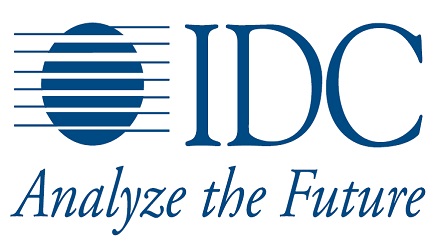E-Business
Phablet 2014/15 Shipments Closing On 500m Units

According to a new forecast from the International Data Corporation (IDC) Worldwide Quarterly Smart Connected Device Tracker, worldwide phablet shipments (smartphones with screen sizes from 5.5 to less than 7 inches) will reach 175 million units worldwide in 2014, passing the 170 million portable PCs expected to ship during the same period.
Next year, total phablet volumes will top 318 million units, surpassing the 233 million tablets forecast to ship in 2015.
While phablets are a relatively new category of device, first picking up volume in 2012, the pressure that the category has placed on the tablet market has already been clearly observed as the growth of smaller, 7 inch tablets has begun to slow.
IDC expects more consumers to shift back toward larger-sized tablets with their next purchase. However, that trend hasn’t made up for the decreased shipments of smaller sizes, which has resulted in lower overall expectations for the tablet market in 2014 and beyond.
“With Apple expected to join the space in the coming weeks, we anticipate even more attention on phablets as larger screen smartphones become the new norm,” said Melissa Chau, Senior research manager with IDC’s Worldwide Quarterly Mobile Phone Tracker. IDC expects phablets to grow from 14.0% of the worldwide smartphone market in 2014 to 32.2% in 2018.
As the Smart Connected Device market matures, and emerging markets drive more of the growth, the percentage of the market made up of phablets plus regular smartphones is expected to increase.
In 2014 IDC expects smartphones to represent about 70% of the total market.
By 2018 that will grow to 75.6%.
While consumers in places like the United States and Western Europe are likely to own a combination of PCs, tablets, and smartphones, in many places the smartphone — regardless of size — will be the one connected device of choice.
Dropping average selling prices (ASPs) for phablets and smartphones will help drive this trend. In 2013, a phablet cost an average of US$568 versus a regular smartphone at US$320, while IDC forecasts that in 2014, those prices will drop to US$397 and US$291, respectively.
“Clearly, mobile computing is a space where consumers are still trying to figure out what mix of devices and screen sizes will suit them best,” said Tom Mainelli, program vice president with IDC’s Devices and Displays.
“What works well today could very well shift tomorrow as phones gain larger screens, tablets become more powerful replacements for PCs, and even smart watch screens join the fray.”
E-Business
Global Crypto Heists Surge to $2.1Bn in H1 2025 as Digital Assets is Weaponised

In a sobering revelation of the evolving threat landscape facing the digital asset ecosystem, blockchain intelligence firm TRM Labs has disclosed that over $2.1 billion worth of cryptocurrency was stolen in the first half of 2025 alone, spanning at least 75 high-profile hacks and exploits.

This staggering figure marks a 10 per cent surge over the previous first-half record set in 2022 and nearly eclipses the total stolen in all of 2024.
But beyond the monetary scale, the report reveals a deeper concern: a growing trend of state-sponsored cyber aggression weaponising crypto assets for strategic and geopolitical purposes.
The most devastating breach to date occurred in February when Dubai-based exchange Bybit lost $1.5 billion—the largest crypto heist in history.
TRM Labs attributes the attack to North Korean state actors, noting that the incident alone accounted for nearly 70 percent of total losses during the period and doubled the average hack size to $30 million.
“The Bybit hack redefined the threat landscape,” the report stated.
“It exemplifies how digital asset theft has transcended criminal opportunism and morphed into a tool of statecraft.”
Indeed, North Korea-linked entities were responsible for an estimated $1.6 billion of the total stolen, further entrenching Pyongyang’s status as the most prolific nation-state threat actor in the crypto sphere.
Yet the menace is diversifying. On June 18, Iranian crypto exchange Nobitex was breached for over $90 million by a group reportedly linked to Israel, Gonjeshke Darande (Predatory Sparrow).
Unusually, the stolen funds were routed to unusable vanity addresses, underscoring symbolic and political motives rather than financial gain.
TRM Labs flagged this as a “disturbing shift,” with digital asset theft increasingly deployed as a weapon in asymmetric geopolitical conflict.
The report also found that more than 80 percent of losses stemmed from infrastructure breaches, including private key theft, seed phrase leaks, and front-end compromises— attacks typically ten times costlier than other vectors.
Meanwhile, DeFi exploits such as flash loan manipulations accounted for 12 percent of losses, reflecting persistent smart contract vulnerabilities despite years of scrutiny.
As digital currencies become enmeshed in global rivalries, TRM Labs warns that conventional cybersecurity approaches are now inadequate.
“Massive breaches, often tied to nation-state operations, require a new defence paradigm,” the firm asserted, urging industrywide adoption of advanced safeguards and cross-border collaboration among regulators and law enforcement.
E-Business
CAC Launches AI-powered Business Registration Portal

Corporate Affairs Commission (CAC) has inaugurated the pilot take-off of its new Artificial Intelligence (AI)-powered registration portal.

A statement issued by the commission explained that Malam Hussaini Magaji, registrar-general of the CAC, made the announcement during the 2025 Stakeholders Forum in Port Harcourt.
According to him, “the initiative is a major milestone in Nigeria’s business facilitation drive.”
The Registrar further explained that the upgraded portal marks a complete overhaul of the Company Registration Portal (CRP), saying that it comes with advanced features designed to simplify and speed up business registration.
The new system, according to him, allows for instant name reservation approvals, likening the ease to creating an email account, and stressing that the AI-powered platform could suggest available alternatives to business names and approve them immediately.
Another innovation, he stated, is the ability to register a business using only the National Identification Number (NIN) of a director or proprietor, pointing out that there is an ambitious target of completing business registration and certificate generation within 30 minutes, subject to real-time NIN validation.
E-Business
Bitget Launches Institutional Services to Empower Fintech Innovation

Bitget has launched its institutional services in Nigeria, offering fintech companies a robust platform to build innovative solutions on top of Bitget’s suite of institutional-grade offerings.

Gracy Chen, CEO, Bitget, in a statement said, “Our goal is to empower Nigerian businesses to innovate and leverage blockchain for wealth creation opportunities, hence, the institutional services empower fintech leaders with tailored solutions, as the offerings designed to cater for the unique operational needs of institutional clients, enabling businesses to embed trading functionalities like spot and futures markets, wallet management, and more, directly into their platforms.
“The Key services include White-label Broker Services which enabled Fintech companies to deploy customized crypto exchanges using Bitget’s infrastructure while managing branding and users independently. There is also API Solutions that can make the Developers to integrate trading functionality via APIs for spot, margin, and derivatives markets, ensuring fast execution and seamless experiences for end users.”
Chen added, “The ND Broker Model provides clients with complete autonomy over user-facing platforms, offering exclusive front-end flexibility while relying on Bitget for back-end market liquidity. Clients are able to employ Protection Fund and Proof of Reserves of over $600million secured in the Bitget Protection Fund and real-time Proof of Reserves, which gives clients assurance of maximum transparency and security.”

 E-Financial2 days ago
E-Financial2 days agoAccess ARM Pensions Advocates Ways to Boost Civil Servants’ Retirement

 E-Business2 days ago
E-Business2 days agoFirm Warns as Social Media Scams Put Users’ Data at Risk

 Telecom1 day ago
Telecom1 day agoAVEVA Highlights Climate Impact Gains in 2024 Sustainability Report

 General News1 day ago
General News1 day agoAfCFTA Opens Opportunity for Logistics Sector

 Telecom2 days ago
Telecom2 days agoMTN Nigeria Launches “Mega Billion Promo” to Reward Customer Loyalty and Drive Financial Inclusion

 E-Business2 days ago
E-Business2 days agoNigeria Ranks 3rd in Africa for Ransomware Threats –INTERPOL

 Telecom1 day ago
Telecom1 day agoALTON Explains SIM-related Services Disruption Across Mobile Networks

 General News2 days ago
General News2 days agoNELFund Warns Students Against Fake Loan Portal



























